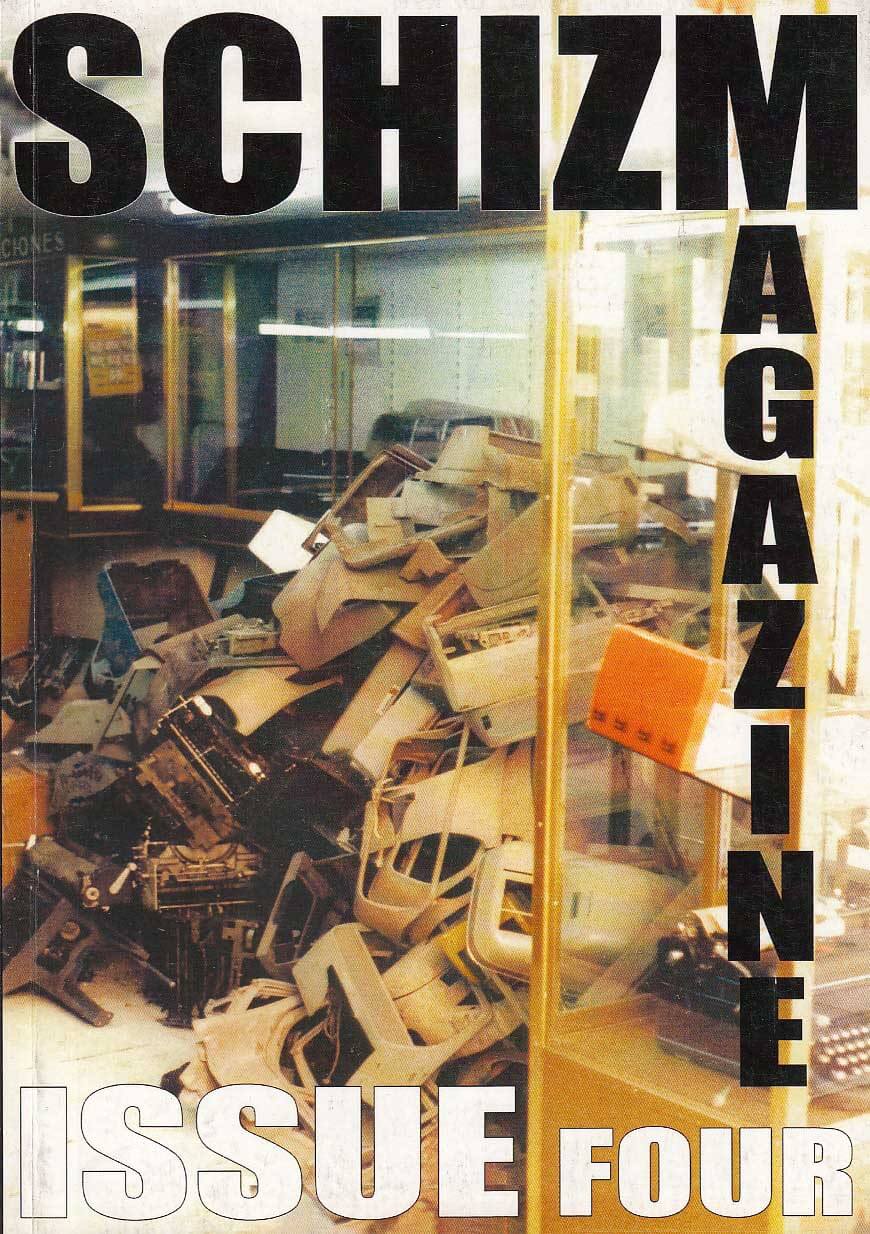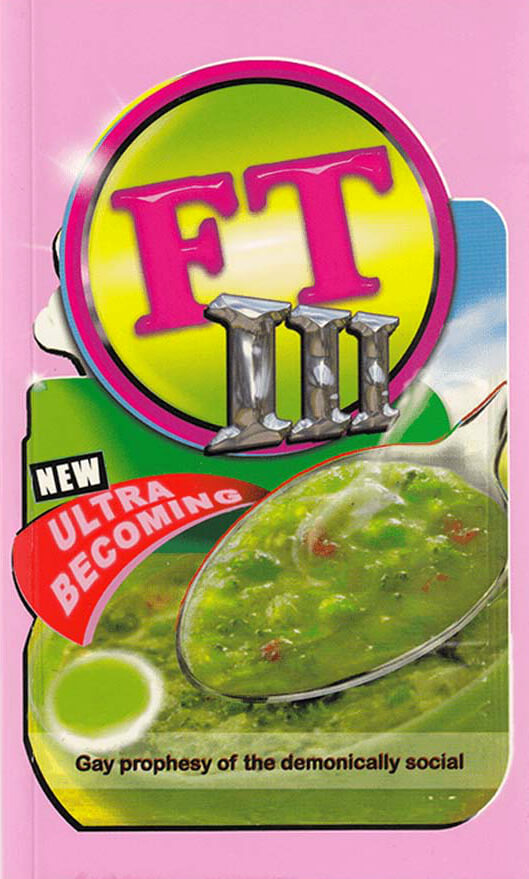Paul Buck
Paul Buck

IN THE BAG
Published as a precursor to BFTK#6, ‘In the Bag’ by Paul Buck is a pamphlet / essay / missive about rarities, the out of print, one-offs and those ‘oddities, oddments and ornaments’ that collectors and magpies seek, hoard and lose. Printed and numbered in an edition of 150, each copy comes with a violet insert featuring a photograph of a Gladstone bag by Valentine Day.

Disappearing Curtains
This book sees the re-emergence of the seminal 1970s magazine Curtainsedited by British artist/writer, Paul Buck.
With its early promotion of French writers such as Georges Bataille, Maurice Blanchot, Jacques Derrida, Jean-Pierre Faye and Edmond Jabès, Curtains’ re-appearance arrives after an exhibition at Focal Point Gallery in 2012 that was recreated from an earlier 1992 work at Cabinet Gallery around the concept of ‘disappearing’.
The invited contributions come from thirteen artists with whom the editor has engaged over the years. In addition, Buck has returned to pull threads from the earlier editions of his magazine to explore ideas with writers encountered in the intervening years, making all appear in a consolidated grouping as a final gesture, one that refuses to disappear.
Contributions include those by: Kathy Acker, Susan Hiller, Liane Lang, Lucy McKenzie, Richard Prince, Miroslav Tichy, Sophie von Hellermann, and many others.

Library
LIBRARY contains four essays and two interviews, with the pre-dominant concern of sexual questions: the subjects in art, film, and literature—the issues tied to Rivette’s La Belle Noiseuse, Madonna’s sexual assault in Dangerous Game, Clunie Reid’s use of language, Richard Prince’s obsession with books, and Paul Meyersberg’s articulation about sex.
‘Like Carol Reed’s crippled trapeze artist now devoted to sensuality, Paul Buck is more than a suitable case for treatment. A personable deviant, Buck’s culpable, desiring proximity steeps these writings, inasmuch as they are apostrophised by his appearance in cameo, inside and outside the text. Buck stalks his work, addressing us in collusive asides. Rather than the disinterest of resistable objectivity, Buck’s criticism is moved by a profound personal investment in his subjects; he does not elide his complicity, nor does he quiet moral considerations. Discussing Richard Prince’s library or Madonna’s instrumentality, Buck makes the possessive, accountable case throughout. His underlying subject is the snarl of art and life, and the perils that abound in their confusion in the personal and their forced dichotomy in culture at large. Art, for Buck, cannot be an apology for the failures of experience, but instead is a compulsive and risky exposure, like a heretical grace, modelling life for our benefit.’ - Ed Atkins
‘Translator, poet, collagist, archivist, novelist, and all-around intellectual impresario, Paul Buck has a formidable knowledge of culture that he shines like a laser in LIBRARY on Richard Prince, Madonna, Abel Ferrera, and the erotics of painting and representation. He approaches the critical essay like a crime scene investigation. LIBRARY is a fantastic read’. - Chris Kraus

Spread Wide
Rebecca Stevens, John Cussans and 2 more
Various artists and authors use two writers' correspondence as a primary source to develop an artistic and literary falsification. In this collaborative volume, the writer and artist Paul Buck works with the late 29 Kathy Acker. Using as source the raw materials of their correspondence from the early Eighties, a period when Acker was writing Great Expectations and trying to leave America for London, Buck confronts issues of appropriation, sampling, and plagiarism, relevant then and now.
Further encounters are triggered by writer Rebecca Stephens, artist John Cussans... and playwright Richard Foreman, artist Susan Hiller, musician David Coulter. Kathy Acker (1947-1997) was at the forefront of transgressive writing from the Seventies until her death. Her provocative intertextual narratives—halfway between autobiography and pornography—were developed in lectures, performances and films (Variety, Bette Gordon).
Her published work includes Blood and Guts in High School (1984), Don Quixote (1986), and Empire of the Senseless (1988). Rebecca Stephens escaped the chains of theology teaching to write on Saints and Courtesans, subjects on which books are in the pipeline.
John Cussans is a writer, artist and researcher who has exhibited regularly in London, Berlin, Slovenia, Vienna, Vancouver. In 2001 he founded The Bughouse, an art-event generator inspired by the work of Philip K. Dick. Paul Buck (born 1942, United Kingdom) is a British poet, performer and author of more than fifty crime novels. He has been challenging notions of writing, narrative, and the limits of the feasible since the late Sixties in books like The Honeymoon Killers, Violations and Lust, Walking into Myself... Chief editor of Curtains magazine, he introduced many French authors to the English audience.
And more

On Figure/s. Drawing After Bellmer
Louis Mason, Sharon Kivland and 2 more
Raised by a fascist father in Nazi Germany, the Surrealist artist Hans Bellmer (1902-1975) dedicated his œuvre to a perverse rewriting of the symbolic order. Famous for the two dolls he constructed in the mid-1930s, his transgressive ideas around the body as anagram were shared by his partner Unica Zürn. Both broke received codes of behaviour and the implicit rules of language, providing fertile ground for artists and other thinkers, including feminists, to similarly rewrite the body. ON FIGURE/S is published in parallel with the exhibition FIGURE/S: drawing after Bellmer (Drawing Room, London, September 2021). It gathers responses to its themes: body as letter, word and sentence; perversion and enjoyment; technical and forensic drawing in pursuit of pleasure; the other than human—becoming object, plant, animal. This book is a way to think through and with works of art and their histories, involving multiple textual forms, collage, and drawing, which take the radical and transgressive energy of Bellmer and Zürn in unexpected directions.
Contributors: Paul Buck, Lola Bunting , Alice Butler, Paul Chan, Iris Colomb, Vincent Dachy, Zoë Dowlen, Rachel Genn, Aurelia Guo, Mathew Hale, Tom Hastings, Rebecca Jagoe, Sharon Kivland, Sarah Lederman, Kate Macfarlane, Kumi Machida, Louis Mason, Reba Maybury, Jade Montserrat, John Murphy, Michael Newman, Bernard Noël, Tamarin Norwood , Francesco Urbano Ragazzi, Aura Satz, Sophie Seita, Anne Lesley Selcer, Isabel Seligman, Sarah Wilson

#4 Schizm Magazine
NOW (obsolescence, regeneration & criticality)
CONTRIBUTORS: Bob Ajar, Shahin Afrassiabi, Michael Andreae, Noah Angell, Caline Aoun, Mike Ballard, Sam Basu, Manuela Barczewski, Paul Buck, John Chilver, Ami Clarke, Craig Cooper, Alexandre Da Cunha, Doyle and Mallinson, Alasdair Duncan, Deborah Farnault, Charles Gute, Michael Hampton, Friederike Hamann, Ed Jones, Dean Kenning, Sara Knowland, Cedar Lewisohn, Leonard Manasseh, Alastair Mackinven, Sascha Mikloweit, Anne Redmond, Giorgio Sadotti and Stephen Setford.
Schizm Magazine invites contemporary artists and writers to contribute pages in response to a theme which, as the title implies, engages with a paradoxical idea. Each issue combines archival material with original works and texts sent in by between ten to thirty contributors.

Frozen Tears III
Texts By: Kristen Alvanson, Stuart Bailey, Stephen Barber, Mark & Steve Beasley, Karla Black, Marianna Botey, Jesse Bransford & Casey Mckinney, Charles Bronson, Paul Buck, David Burrows & Simon O'sullivan, Bonnie Camplin, Lisa Castagner, Ccru/Orphan Drift, Dennis Cooper, Michael Corris, Esther Planas, Karen Cunningham, Kim Coleman & Jenny Hogarth, Michael Cross/ M Satai, John Cussans, Enrico David, Anthony Davies, Lorenzo De Los Angeles Iii, Madeline Djerjian, Peter Donaldson, Ross Downes, Electric Six, Patricia Ellis, John Espinosa, Dick Evans, Keith Farquhar, Dan Fox, Luca Frei, Barnaby Furnas & Ivette Zieghelboim, Tony Garifalakis, Babak Ghazi, Ilana Halperin, Mark Harris, Iain Hetherington, Damien Hirst, Klara Hobza, Stewart Home, Rachel Howe, Mark Hulson, Andy Hunt, Andrew Hughes, Gareth Jones, Kevin Killian, Kool Keith, Steve Klee, The Knockouts, Pete Lewis, Cedar Lewisohn, Fiona Lumbers, Patricia Macormack, Andrea Mason, Natt Mellors, Anna Mitchell, N.R.K Mohammad/ Sos Newsrod/ Dan Thurwen, Gean Moreno, Hv Morton, Donal Mosher, Neil Mulholland, Patrick Mullins, Yuki Muruyama, Reza Negarestani, No Bra, Paul Noble, Bernard Noel, David Osbaldeston/Joe Devlin, Arthur Ou, Mike Pare, Chloe Piene, Esther Planas, Elizabeth Price, Adam Putnam, Harry Pye, Hillary Raphael, The Rebel, Steve Rushton/Hubert Czerepok, Amelia Saul/Jo-Ey Tang, Kenji Siratori, Craig Slee, Alison Smith, Emma Stark, John Strutton, Francis Summers, Rebecca Taylor, Simon Thompson, Mark Tichner, Ian Titus, Dan Torop, Jeffrey Vallance, Harlan D Wilson, Benny Zadik.

Frozen Tears II
Texts By: Kathy Acker, Mireille Andrès, Antonin Artaud, Dominique Auch, Ned Baldwin, Stephen Barber, Georges Bataille, Baudelaire, John Beagles, Mark Beasley, Dodie Bellamy, Alissa Bennett, Simon Bill, Jesse Bransford, R.A.Bransford Jr Esq, Paul Buck, Bonnie Camplin, Aline Bouvy/John Gillis, Dennis Cooper, John Cussans, Trinie Dalton, Sue De Beer, Brock Enright, Felix Ensslin, Dan Fox, Robert Garnett, Paul Green, Matthew Greene, Fernando Guerreiro, Pierre Guyotat, Ilana Halperin, Glen Helfand, Jacques Henric, Rachel Howe, Ben Kaleb Brantley, Seth Kelly, Kevin Killian, Christopher Knowles, Jennifer Krasinski, Cedar Lewisohn, Lorenzo De Los Angeles Iii, Rachel Lowther, Dave Martin, Karl Marx, Casey Mckinney, Gean Moreno, J.P. Munro, Paulina Olowska, Simon O¹Sullivan, Arthur Ou, Damon Packard, Mike Paré, Graham Parker, Wotjek Puslowski, Adam Putnam, Ian Rafael Titus, Eugène Savitzkaya, Eric Schnell, Amy Sillman, Allison Smith, Joanne Tatham/ Tom O'sullivan, Daniel Torop, Genya Turovsky, Banks Violette, Benjamin Weissman, Ivan Witenstein, Thom Wolf

On Violence
Violence is in language and violence is language. The violence of language stratifies voices into those that matter and those that do not, using ideas of appropriate form and structure as its weaponry. It claims propriety and politeness are the correct mode of address, when urgency and anger are what is needed. Where languages intersect, hierarchies of language become means for domination and colonization, for othering, suppression, negation, and obliteration. The demand for a correctness of grammar, the refusal to see what is seen as incorrect, the dismissal of vernacular in favour of the homogenised tongue: all are violent. The narrative of history is a narrative of violence. The contributions herein refuse this narrative. They explore how violence permeates and performs in language, how language may be seized, taken back to be used against the overwhelming force of structural and institutional violence that passes as acceptable or normal. Violence may be a force for rupture, for refusal, for dissent, for the herstories that refuse to cohere into a dominant narrative.
Contributors: Travis Alabanza, Katherine Angel, Skye Arundhati-Thomas, Mieke Bal, Janani Balasubramanian, Elena Bajo, Jordan Baseman, Emma Bolland, Pavel Büchler, Paul Buck,Kirsten Cooke, Jih-Fie Cheng, John Cunningham, Andy Fisher, Caspar Heinemann, Jakob Kolding, Candice Lin, Rudy Loewe, Nick Mwaluko, Vanessa Place, Katharina Poos, Tai Shani, Linda Stupart, Benjamin Swaim, Jonathan Trayner, Jala Wahid, Isobel Wohl, Sarah Wood